The Police Executive Research Forum (PERF) recently published “30 Guiding Principles” the organization feels every American law enforcement agency should adopt to better handle the extremely controversial aspects of police use of force.
We will closely examine the 30 Guiding Principles presented by PERF. Some are very good recommendations, but others appear horribly misguided. A document like this, from an organization like PERF, can have wide-ranging impact on the profession of law enforcement. As such, any document recommending sweeping changes needs to be very closely evaluated based upon its source, the document’s content, and the reasoning behind publishing such a document.

EDITOR’S NOTE: This is Part I in a 3-part series covering the 30 Guiding Principles the Police Executive Research Forum recently published. This part will cover some background on PERF, along with what we consider to be valid and valuable recommendations for the advancement of professional police services. The “Good” Guidelines. In Part II we will discuss areas of the 30 Guiding Principles falling in a “Bad” area, and Part III will discuss the “Ugly” Guidelines that PERF has attempted to persuade the nation’s police Chiefs and Sheriffs to adopt.
THE SOURCE: The Police Executive Research Forum
The PERF mission statement from their website:
“Founded in 1976 as a nonprofit organization, the Police Executive Research Forum (PERF) is a police research and policy organization and a provider of management services, technical assistance, and executive-level education to support law enforcement agencies. PERF helps to improve the delivery of police services through the exercise of strong national leadership; public debate of police and criminal justice issues; and research and policy development.”
As the name implies, the Police Executive Research Forum, is an organization dedicated to making police policy changes at the highest levels in police management. This organization is not a street level training organization, or one that seeks solutions where the “rubber meets the road”. PERF is a top-down organization, providing broad recommendations to the nation’s police Chiefs.
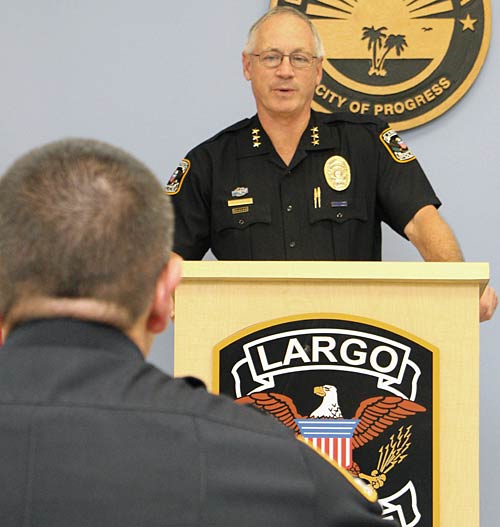
PERF’s leadership are composed of Chiefs from some of the largest police organizations in the United States. Those police organizations have layers and layers of command structure separating the Chiefs from the officers on the road. Many of these large cities also happen to have some of the highest crime rates in the nation, with severe disparity in social levels and wealth, distinct differences in how government services are rendered, and rampant problems with drugs and gangs.
General membership requires the following:
“Be the executive head of a municipal, county or state-funded agency that provides general police services. The agency must have at least 100 full-time employees, or serve a population of 50,000 or more people. Hold a baccalaureate degree from an accredited college or university.”
“Subscriber Membership” allows Chiefs and Commanders not meeting the General Membership requirements to also have partial member privileges.
As stated in PERF’s mission statement, the organization seeks to exercise a “strong national leadership” in addressing today’s concerns in law enforcement. Read plainly – PERF would like to see national police standards instituted throughout the nation, and would like to be a leader for deciding what those standards should be. PERF appears to call for all police agencies to operate under the same general policies.

Policing in a major metropolitan city can, and usually does, differ drastically from the type of policing expected and performed in smaller and medium-sized cities. In addition, there are well noted differences in policing styles from the west coast, to the northeast, to the south and midwest. This is what Americans from those various regions have wanted since the inception of our country – the right to self-govern.
Attempting to dictate local policies from Washington, D.C. is contrary to our form of government, and fails to acknowledge the significant differences from region to region. Though titled “Guidelines”, the wording in the PERF document is rather clear – this is what you should be doing, and if you are not, you’re wrong!
DOCUMENT CONTENT: PERF’s 30 Guiding Principles for Police Use of Force
Click this link to see the entire PERF Police Use of Force 30 Guiding Principles document.
Among the 30 Guidelines PERF presents, there are some very good recommendations. I’ll start by pointing out these recommendations that are reasonable and appropriate for any agency to implement.
These guidelines focus on the duty of law enforcement to serve and protect the community, including those we are required to arrest or use force upon. They center around inter-personal contacts and relationships, and how the manner police officers interact with citizens, including suspects and the mentally ill, can often dictate how the encounter end. Though required to uphold and enforce the law, officers can play a critical role in de-escalating the event, or at a minimum ensuring the public that every attempt was made on our part.
However, the starting declaration in the PERF Guidelines is one of the most troubling aspects of the document, and where it becomes evident that this is as self-serving as it is intended to be beneficial for others:
“The policies, training, tactics, and recommendations for equipment detailed in this document amount to significant, fundamental changes in a police department’s operations and culture. It is important that these changes be undertaken in a comprehensive manner, and not in a piecemeal or haphazard way. The policy changes must be backed up with thorough, integrated retraining of all officers.”
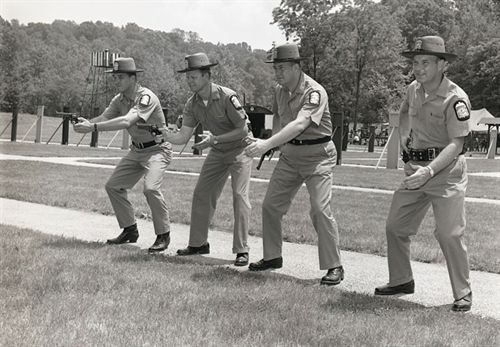
The tone of the document is clearly set for “fundamental changes” taken in a “comprehensive manner”, and involving “retraining of all officers”. Here is where I believe we see PERF exerting its influence for its own benefit. Not all officers need to be “retrained”, and not all agencies need “fundamental changes”. In fact, there are many professional agencies that already exercise model policies from CALEA, IACP, and other well-respected sources. Yet PERF would seek to sweep all of that good aside, for its own notion of what “national” direction American law enforcement should take.
There is no research, studies, statistical data, or legal guidance presented by PERF to support these sweeping changes. However, it is a very hot topic in the national media, and one that can very easily be exploited if you purport to have a solution to “the problem”.
Sound discussion on how police communicate, confront violent persons, use force, and with what tools, is extremely important and should be on-going. How the profession stands behind officers who exercise their authority appropriately is just as important.
In the last few years we have seen the national media take over the narrative on police force, and their message has often been misguided for profits. This has furthered tensions, distrust, misinformation, inflamed false accusations, ramped up riots, vilified officers who performed their duty, and squelched the truth because it did not “fit the narrative”. All to the tune of millions of dollars in advertising fees for the time slots of the very shows “creating” the news.
It is naive to assume that making broad and sweeping recommendations for change will somehow fix the nation’s crime problem, or handling of mental illness, but it sure will capture headlines.
The Good
- Recognizing the sanctity of life and using that as a key deciding factor.
This goes to the core of law enforcement’s duty to serve. All actions should be taken with the utmost respect for life, and deadly force should only be used when all other options are unavailable or inappropriate for the threat faced. Caring for suspects well-being, and acknowledging their humanity, defines a professional law enforcement officer. The Constitution and Bill of Rights clearly lay out each Americans “right” to life. Officers must handle each confrontation with that foundation as a guiding principle.
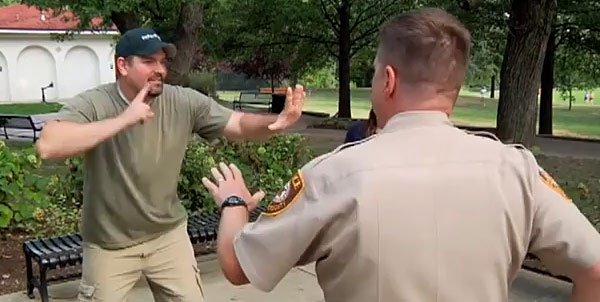
- Attempting communication first.
Communication is fundamental to everything officers perform. Proper communication techniques should be taught in the Academy and in on-going training sessions – emphasizing control, calmness, and de-escalation. When orders and warnings are necessary, officers should be taught to be direct and clear, so no reasonable person could misunderstand. Police come into contact with people at their worst. Knowing how to show genuine concern is fundamental to our service to the public.
- Using de-escalation techniques.
The goal of police should be to bring order to chaos. However, this can often be accomplished through words, posture, and body language, rather than physical force or commands. Asking open-ended questions, rather than barking orders, can often bring a hostile suspect down because everyone wants their side of the story heard.
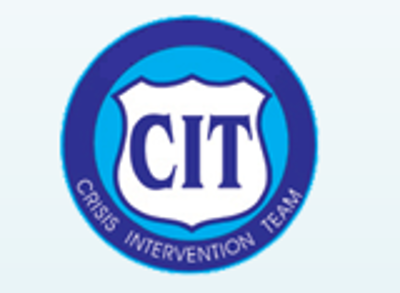
- Training officers in the Memphis CIT Model.
This model has won international acclaim for its combined approach to dealing with the mentally ill. Through a collaborative effort of police, medical personnel, and mental health professionals, the CIT Model can provide officers with a wealth of other options to assist the mentally ill and get them the help they need. At a minimum, each agency should have officers trained in this model available at any time. The numbers of Americans suffering from mental health issues is so large that any police agency should recognize this contact as one of their primary duties. Therefore training should reflect that frequency.
- Duty to intervene when other officers exceed force limits.
Police officers are human beings with all of the emotional baggage that involves. Sometimes an officer can become overwhelmed and begin to use force not justified by the situation at hand. Each officer has the duty to intervene to prevent that officer from violating the law, and to protect the rights of the person who may receive that force. Supervisors should be made aware of situations, and appropriate measures should be taken to separate the officer from the scene, and provide them opportunities for peer or professional counseling.
- Rendering first aid as soon as possible.
This goes right back to the sanctity of life. Once the violent situation is over, and the suspect secured, police officers have a duty to render aid to the best of their ability, and to summon those who can provide higher levels if needed. To do this properly, and legally, officers need to be trained in basic first aid, and should have training in trauma aid as well.
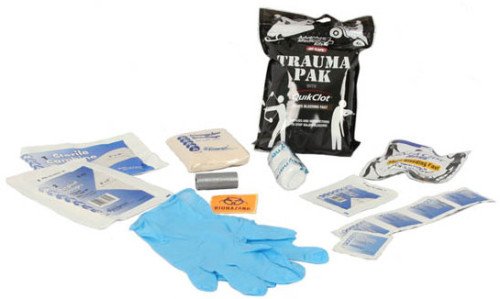
- Supervisory response to all critical incidents or use of force.
Supervisors have the responsibility to ensure that officers are doing their job professionally and within legal and departmental guidelines. Any critical incident should have supervisory oversight. When significant force (strikes, neck restraints, take-downs, etc.) is used against a person, a supervisor should respond to the scene. Lower level uses of force (wrist locks, Clamp, pressure points, OC, etc.) should be reviewed by a supervisor, but may not require a response to the scene in my opinion.
- Training as teams.
Training with the people you will actually be on calls with makes perfect sense. It builds camaraderie, and the instinctual attributes that can make a team action seamless.
- Less lethal training and options.
Gone are the days of only carrying a pistol and your fists. There are plenty of intermediate force responses that can end a volatile incident with minimal injuries to both officer and suspect. Officers should be trained in the use, and the legal justifications for use of such items, and then be required to carry those items with them in the field.
- Better training for dispatchers.
Dispatchers can influence a call from the start. Dispatchers should be trained to ask detailed questions, and follow-up questions to ensure the best description of the event is being broadcast to responding officers. When information is not there or available that too should be broadcast. Dispatchers should keep callers on the line during ongoing events, and provide additional or updated reports to officers as quickly as possible. Better trained dispatchers can set the appropriate tone of the response by the officers.
- Working with families of the mentally ill
Realizing the resources available to officers when confronted with persons suffering from mental illness is invaluable. Some family members can provide a wealth of information on what works and what doesn’t for their involved member. In addition, NAMI is an outstanding resource for strategies to defuse situations. Most NAMI representatives have family members affected by mental illness, so their desire for successful intervention is sincere. They are also close partners with the CIT program, and fully understand the needs for officer safety.
- Critical incidents ending in death or serious injury investigated by specially trained personnel.
Each of the above components are wise guidance for dealing with critical incidents, and most of them have been highly recommended and accepted in many law enforcement agencies. Recognizing the sanctity of life is absolutely crucial, and I believe the best Guideline from PERF.
Our Constitution is full of references to the individual’s right to life and liberty. The Bill of Rights is more than a statement, it contains clear restrictions on government intrusion to individual liberty. The right to live, and live freely, is a guiding principle of our form of government and law, and should be a foundational training concept for law enforcement officers.

In addition to this guiding principle that all life is precious, officers need to have a firm understanding of the Priority of Life scale recognized by the International Association of Chiefs of Police (IACP), and the National Tactical Officers Association (NTOA). Hostages or victims (#1), and innocent bystanders (#2), take priority even over law enforcement or other first responders (#3). This scale highlights our duty to protect, and is an outstanding guide in our decision-making process. If the first two are in imminent danger, our duty to protect demands our action.
Priority of Life
- Hostages or Victims
- Innocent by-standers
- Police or First Responders
- Suspects/Subjects.
However, viewing the Priority of life scale at the other end can be just as advantageous for officers. By recognizing officers priority over suspects (#3 and #4 respectively), officers can make wiser decisions about when to “go in” for an arrest or custody situation. If the only person in threat is a suspect/subject, then it violates the Priority of Life to unnecessarily expose ourselves to danger to take them into custody. This one violation is attributable to many of the high-profile use of force cases in recent years. Waiting, and being patient is not cowardice or incompetence in those circumstances, it is simply good tactics. Unfortunately, the expectation to “act” can override the wiser and safer tactical decision-making.
Obviously the suspect has a say, and at any time the circumstances can change from one where the suspect is contained and not an immediate threat to anyone, to a situation where the suspect has become a threat to #1, #2, or #3. In those situations action against the suspect (#4) must be taken to protect the lives of those higher on the Priority of Life scale.
Final Thoughts Part I
The Police Executive Research Forum 30 Guiding Principles document does contain some extremely valuable recommendations. The sanctity of life should be taught in the Academy, in Field Training, and in on-going training throughout an officer’s career. Placing the value of life extremely high on our priority list will help officers gauge their responses to threats.
Having a strong working understanding of the widely accepted Priority of Life scale can provide even greater understanding and guidance in the most chaotic and volatile incidents. We have a duty to intervene quickly to protect the most vulnerable. On the other hand, if there is not an imminent threat to innocent people, and we can control or contain the suspect, we must be confident and wise enough to avoid needlessly placing ourselves in danger to apprehend the suspect. Alternative measures should be trained and available to diffuse or change the options of the suspect.
Officers must be masters of communicating with a variety of persons in a variety of circumstances. The more life experiences an officer has, the greater chance at success they’ll have at being able to verbally navigate a confrontational situation. Communication is key to everything we do in life, and our police officers should be some of the most skilled communicators in any profession.
Mental health issues are prevalent throughout the country and understanding our legal and moral duty is paramount to any agency’s or officer’s success. There is no community that is not or will not be affected by mental illness. Using the proven Memphis CIT Model is an excellent choice, and every agency should have mental health trained officers available.

Having a multitude of less lethal options is not only wise, it is expected. If agencies do not provide officers with less lethal means of resolution, the chances of elevating to lethal force multiply exponentially. At a minimum, officers should have access to chemical sprays, control tools (including batons), and an electronic control device (ECD). Having shotgun bean bag rounds would also be nice. Giving officers options, provides a greater chance at a use of force without lethal means.
Training dispatchers to be more than call takers and call providers is very important. Give dispatchers a guide on the types of information that is critical to proper response by officers. Teach them to stay on the line during ongoing events, and to provide updated information as soon as possible. Encourage dispatchers to ask questions beyond the basic location and event information. Sometimes having a history of why there is a problem, can be the lynch pin for success.
Be sure to read Part II to have a full understanding of PERF’s recommendations. Part II will cover the guidelines that are at best misguided, and at worst contrary to officer safety and common sense.